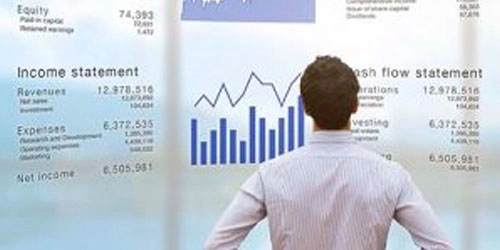Financial Dashboards Every Strategic Minded CFO Needs

Any strategic thinking CFO requires tools to manage daily processes and plan for the future. This type of forecasting is facilitated with proper reporting. Strong CFOs need real time financial data, measurements, and snapshots to keep a tab on the company pulse and early warning signs of financial problems. If you are considering a new enterprise system or financial reporting system the below list of critical dashboards for any CFO can aid in your search.
- Working capital – Monthly cash flow reporting simply isn’t enough for a strategic minded CFO. Your CFO must make big budget decisions on the fly, those decisions can’t wait until the end of the month reporting arrives. Your CFO needs a dashboard that reports daily movement of cash and where they stand within their budget to move forward or pull back on big projects or purchases.
- Operating Cash Flow – Cash flow reporting works on an entirely different pace than income, sales, and revenue. If reporting isn’t up to date or accurate a CFO cannot determine what is actually available to pay bills to keep operations moving. This dashboard serves as a “checkbook view” that provides daily reports of company bank accounts.
- Current Ratio – The most important data from payables and receivables is how well both areas are being processed. The current ratio metric on assets versus liabilities gives a gauge on whether your accounting office and financial system is on track. With this dashboard a CFO can foresee solvency issues in advance and reorganize to avoid crisis.
- Payroll Headcount Ratio – With staff turnover the employee count can shift quickly. The payroll headcount ratio provides the CFO with a clear understanding of full-time labor assets versus part-time and contracted services.
- Return on Equity – This dashboard provides your shareholders the data they care most about. The Return on Equity is the report you need for your reoccurring board meetings. This dashboard organizes your data between the investment perspective and the operating view.
- Quick Ratio – In contrast to reports that reflect long-term data, CFOs also need a quick review of daily success. This dashboard flags problems quickly for immediate turn around and decision making.
- Debt to Equity – Managing your debt is critical for any strategic thinking CFO. Knowing if your payments are on track and if you have enough equity to include those payments in your long-term budget is critical. This dashboard reviews your commitments and reports when your business is becoming burdened by borrowing and credit costs.
- Accounts Payable Turnover – CFOs use this dashboard as a basic oversite view of operations. Fast turnover is a sign that your business is solvent and able to take care of its financial obligations. Poor turnover serves as a signal that you are facing delays due to cash problems, lack of trained staff, or mistakes that need correction.
- Accounts Receivable Turnover – This dashboard provides your CFO a measurement on how fast cash and sales revenue is coming into your back account. Long delays can mean having to borrow while waiting or having to delay operations, a position no CFO wants to be stuck in.
- Inventory Turnover – While not directly related to cash flow, knowing your inventory flow provides a CFO verification of revenue figures. The more goods going out the door, the more one should see sales rise. If there isn’t an accurate correlation a CFO knows there is a waste or fraud problem that needs to be addressed.
While individual CFOs may require other reporting dashboards for their specific institutions, the dashboards listed above provide the basic metrics every strategic thinking CFO needs. With the right system your data can be manipulated to provide these reports in one place for accurate planning by your CFO. MicroAccounting has solutions that CFOs need to accurately report the data that build these reports for daily finance management. For more information give us a call at 855-876-3773 or email us at [email protected].




